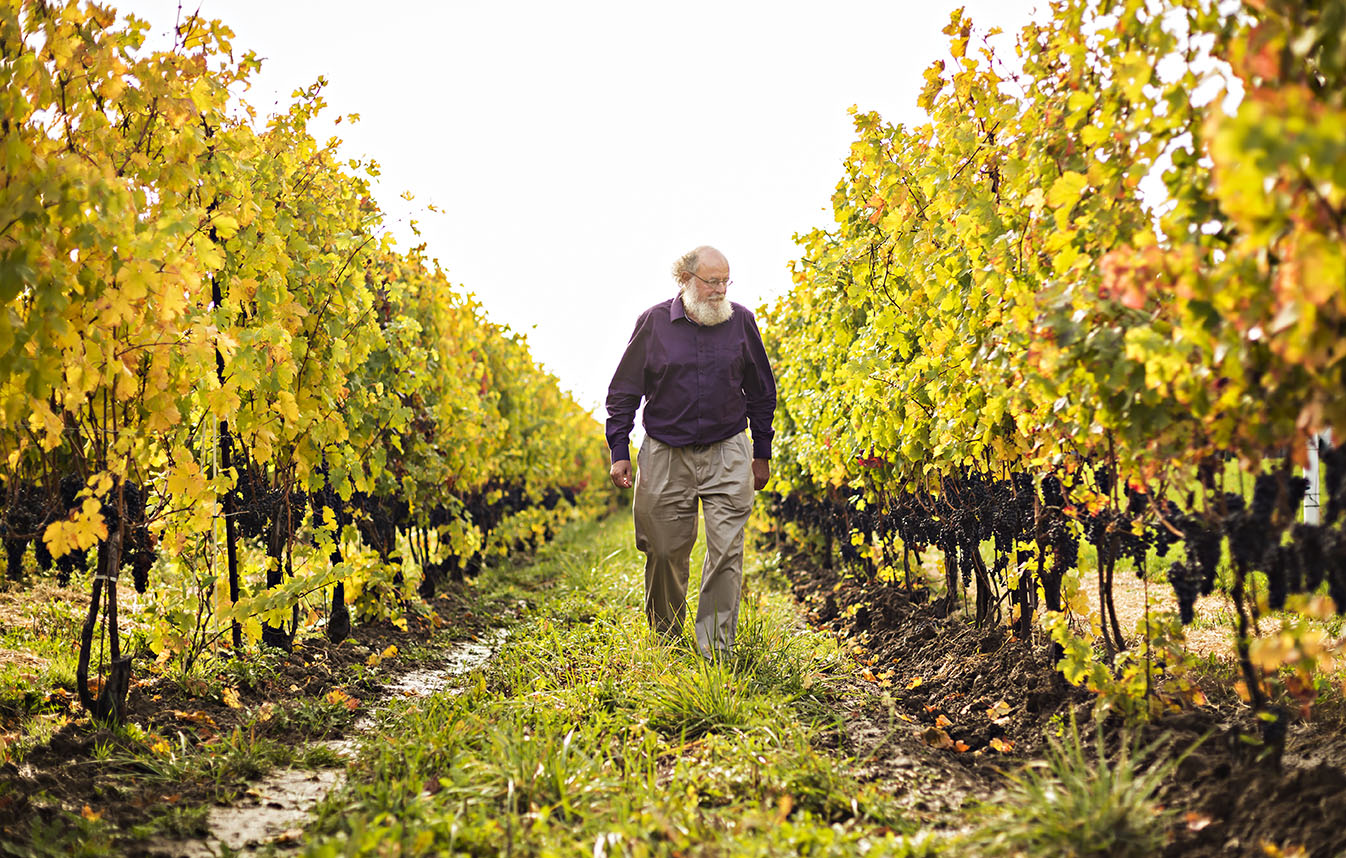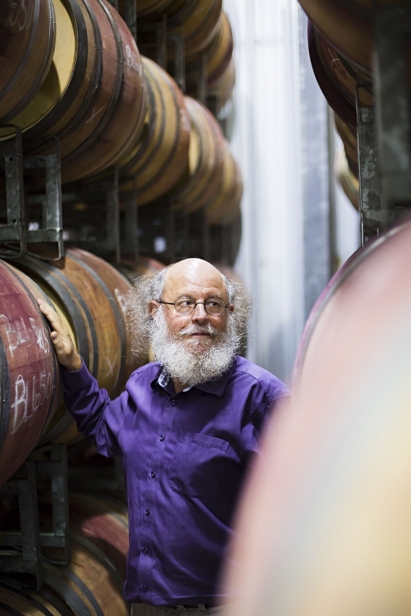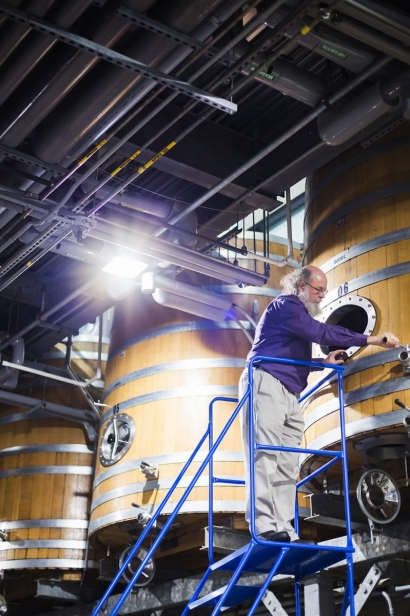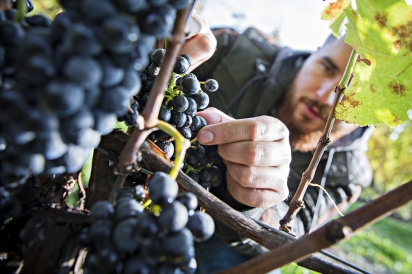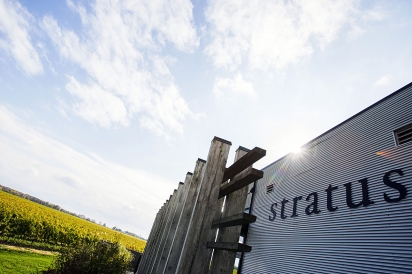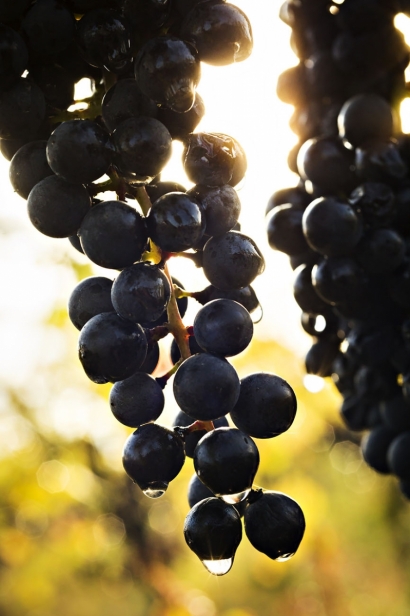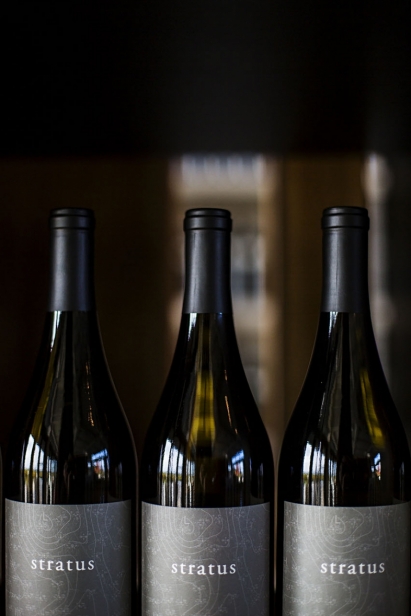Water to Wine
"We farm our vineyard and guide our wine-making as though our children’s future depends on it,” reads part of Stratus Vineyard’s environmental mission statement.
Though this type of thinking is now prevalent in the Niagara winemaking region, it wasn’t always so.
“The late '80s and early '90s is when we started to pay attention to these things,” explains Jean-Laurent Groux, more commonly known as J-L, Stratus’s awardwinning winemaker. “In the early '90s, wineries were aware they had to change their ways.”
Pressure from local municipal governments to clean up water runoff and increased awareness around environmental factors, including over consumption of water, led to industry-wide changes in thinking.
A native of the Loire Valley in France, Groux studied winemaking in Burgundy and Bordeaux before taking a trip around the world to learn about global wine regions and styles of winemaking. That trip eventually brought him to Niagara nearly four decades ago and that’s when he saw the region’s potential.
Suzanne Janke, the winery’s estate director, says Groux’s “sense of adventure and discovery, coupled with his European training and experience, made for a perfect fit to help pioneer the modern Niagara wine industry.”
And pioneer he did. Stratus Vineyards, located on 62 acres of the Niagara Lakeshore sub-appellation, was the first winery in Canada to receive LEED certification in 2005. LEED, which stands for Leadership in Energy and Environmental Design, is an increasingly popular rating system now used in more than 150 countries that acknowledges superior environmental excellence in building and design.
A large part of that certification is thanks to the way the winery treats water — key criterion needed to achieve LEED status.
The goal is to “use less water coming into the winery and minimize the water coming out,” Groux says.
It’s part of the vineyard’s larger sustainability platform, which Janke and Groux say is constantly evolving. “By 2016, our water consumption was less than 60 per cent of what it measured in 2012,” Janke says.
One of the practices contributing to this decrease recoups water that lands on the winery’s roof during rainfall. That water isn’t used for safety-sensitive practices such as barrel or tank cleaning, but rather for young vine irrigation and landscaping.
The way the vineyard is designed doesn’t require vine irrigation except in the infancy stage, explains Janke, something that is common in many vineyards.
A swale — a shallow marshy ridge — around the winery helps trap whatever water can’t be saved from the roof. The water is then pumped and cleaned by cattails before going out to the region’s storm sewers, Groux says.
It’s a “natural ecosystem that acts as natural water treatment,” Janke says.
In the past, they used to fill new wine barrels with water to check for leaks. Today, they add only five litres before the barrel is rolled around to try and spot any issues.
An investment in electrostatic sprayers has helped reduce water consumption by eight times what it used to be, Groux says. “The vine has a negative electrical charge and the equipment is positively charged,” he clarifies. “Droplets are attracted directly to the leaves, so instead of the water going to the ground, most of it is going directly to the vine.”
This method opens a whole other dimension of sustainability, Groux adds. By using electrostatic sprayers, you’re treating the vineyard with less water and less product while using less manpower and less gasoline to power the tractor towing the tanks.
Those tanks hold nettle and white bark tea instead of traditional herbicides, to help prevent pests.
“The whole thing is positive financially as well, so yes, the equipment is more expensive to buy, but there is a return on investment,” he says.
The goal of using less water goes beyond the vineyards and winemaking itself. From low-flow toilets, to automatic taps and a filtered water system for the winery’s hospitality program — the water-saving theme is seen across the operation.
Though it may not seem as though the winery could do much more, the conversation around water consumption is ongoing at Stratus.
Soon, Groux says the winery will be adding a better monitoring system to know exactly how much water is being used.
The winery, which makes assemblage and varietal wines from 10 red and six white grape varieties, also boasts a green committee that meets quarterly. Employees from all departments come together to contribute and implement environmentally sustainable activities. These have included tree replanting, birdbox building and creating pollinator gardens, to name a few.
In recent years, Stratus has also become a master of upcycling waste products.
Pomace (what’s left after the vineyard’s grapes are pressed) is further pressed into grape seed oil, barrels are upcycled into platters and red wine lees (the residual yeast left after wine ferments and ages) are used in products made by SOMA Chocolatemaker. Those wine-infused chocolate bars have gone on to win global awards, including a silver finish at the 2015 International Chocolate Awards and at the Canadian National Competition in 2016.
Stratus may not be turning water into wine, but it is treating water with the same level of admiration as a good bottle of Niagara’s finest.
“We are working from the earth, so we make decisions that are as gentle with the land as possible,” Janke says. “That’s our business.”
Stratus Vineyards
2059 Niagara Stone Rd., Niagara-on-the-Lake, Ont.
stratuswines.com, 905.468.1806


